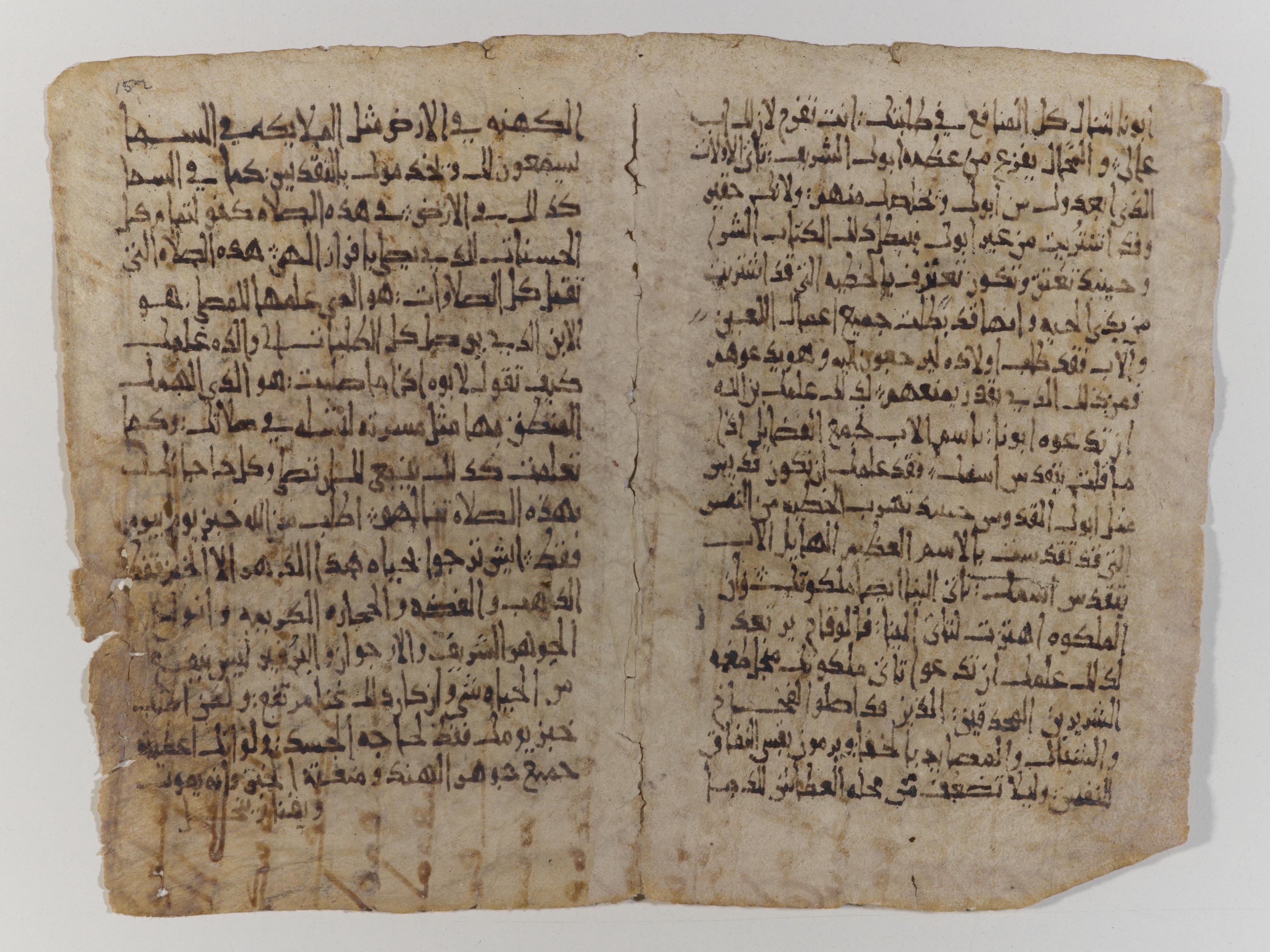Last week, IQSA published three scholarly papers online and highlighted that of Dr. Aziz Al-Azmeh. This week, we move to the paper by Dr. Alain George (University of Edinburgh), which has also been revised since it’s initial posting.*
The paper, “On an early Qurʾanic palimpsest and its stratigraphy: Cambridge Or. 1287,” begins:
A century ago, Agnes Smith Lewis and Alphonse Mindanao published a short book about a group of very early Qur’anic leaves. The parchment of these fragments, together with that of others written in Syriac, Greek and Arabic, had been reused to create a new book in the ninth century by Christian Arabic scribes, who thereby unwittingly preserved it for later generations.
As George explains in his introduction, “The stratigraphy of this complex book—its intertwined and juxtaposed layers—can yield something of rare value: scraps of evidence about the context of some of the oldest Qur’anic leaves in existence.”

One of the “large Qur’anic leaves,” with Qur’anic lower text and Christian Arabic upper text. Cambridge, Cambridge University Library, Or. 1287, fol. 89v. Copyright: Syndics of Cambridge University Library.
He adds that “it is only in the last decade that people have started getting interested in Or. 1287 again…. My own focus has been on its Arabic scripts, both Qur’anic and Christian, and on the palimpsest as a historical ?document.” This specific analysis provides an overview of the palimpsest followed by discussions of both the large and small Qur’anic leaves, the Christian Arabic upper texts, and the historical context of the manuscript.
The vast majority of extant leaves in the Hijazi tradition (the modern name for the earliest Qur’anic fragments) were discovered among thousands of other Qur’anic folios in repositories of great historical mosques, such as Damascus, Fustat, and Sanaa. In the palimpsest, this context is reduced to about a hundred leaves, which is small enough to provide the basis for a historical reflection. The manuscript straddles two key eras and milieux, Muslim and Christian, between the seventh and ninth centuries (and more if one takes into account the Biblical and secular Arabic leaves). One key question will be: how did a Christian community living under Abbasid rule come to own very early Qur’anic leaves?
For a detailed exploration of this and many other pertinent questions, read the full paper at this link. (It is, in turn, a shortened version of an article by George published in French with full references and illustrations, found here).
* Note: This revised version of Dr. George’s paper was uploaded to IQSAweb on December 23rd, 2013. Visitors who downloaded this paper before this date should discard the previous copy and replace it with the current document, here.
© International Qur’anic Studies Association, 2013. All rights reserved.
